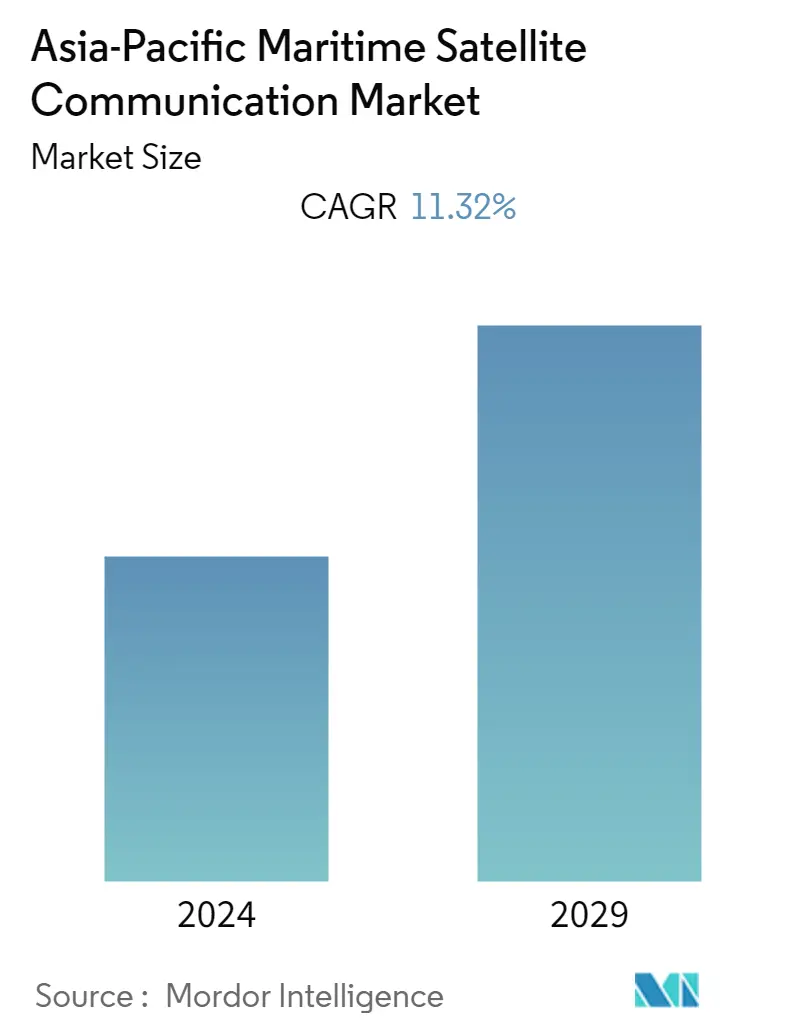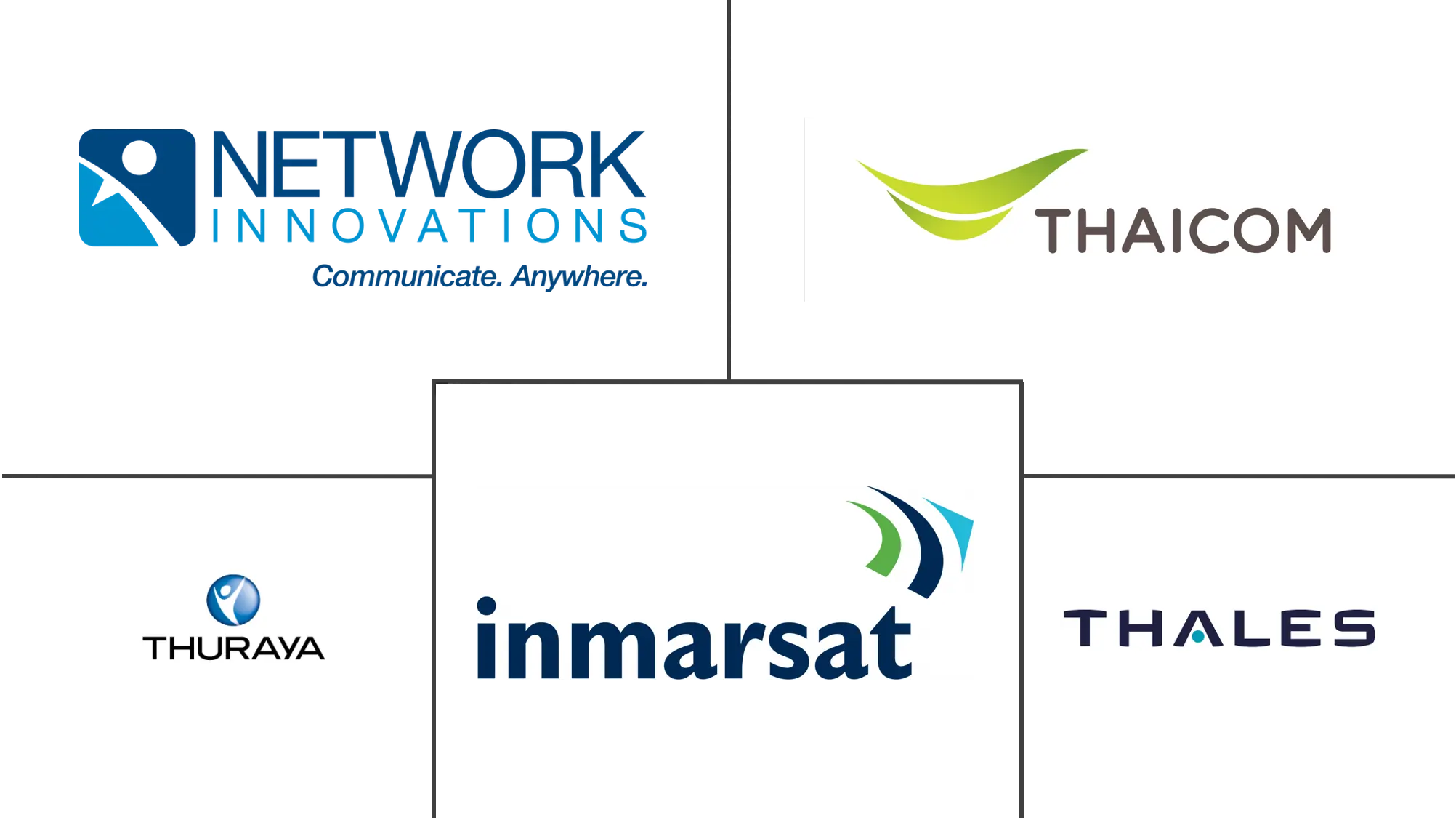Market Size of Asia-Pacific Maritime Satellite Communication Industry

| Study Period | 2021 - 2029 |
| Base Year For Estimation | 2023 |
| Forecast Data Period | 2024 - 2029 |
| Historical Data Period | 2021 - 2022 |
| CAGR | 11.32 % |
| Market Concentration | Medium |
Major Players
*Disclaimer: Major Players sorted in no particular order |
Need a report that reflects how COVID-19 has impacted this market and its growth?
APAC Maritime Satellite Communication Market Analysis
The Asia-Pacific maritime satellite communication market is expected to register a CAGR of approximately 11.32% during the forecast period. The major factor driving the market growth is increased sea-borne threats and ambiguous maritime security policies in the region.
- With the ship traffic in the Asia-Pacific region increasing significantly, it has become crucial to improve safety and security and safeguard the environment. Per the IBEF, two years ago, cargo traffic increased by 1.69% year-on-year to 1561.0 million tons in India. Major Indian ports handled 720.29 million tonnes of freight volume in the current year. India's exports of goods were USD 417800.0 million in the current year, an increase of 40% from the previous year.
- Commercial vessels, like container ships, need reliable satellite communications to stay connected to their main offices and support crew welfare activities. Satellite services can also offer coverage and an effective communication channel to help relief operations during emergencies.
- Maritime satellite communication will play a crucial role in autonomous ships, which seek to make ships self-driven to boost competency and productivity, thus allowing efficient task performance. It minimizes human mistakes by lowering the labor needed to operate the ship. These ship designs are now the subject of experiments, but they appear promising in the long run. These ships will be largely crewless and equipped with various new and improved technologies, including tracking systems, sophisticated sensors to avoid obstacles, positioning systems to keep them informed about alternate routes, and control systems so that teams on the shore can operate the ships in specific emergencies. These ships maintain a constant connection with the team ashore and, as a result, need sophisticated tools and systems.
- India intends to spend USD 8200.0 million on port construction projects by 2035. Adani Group stated that it aims to have all of its data centers powered by renewable energy by 2030 and that Adani Port will have zero carbon emissions by 2025. These factors will further act as secondary driving factors for the maritime satellite communication device and service growth in the forecast period.
